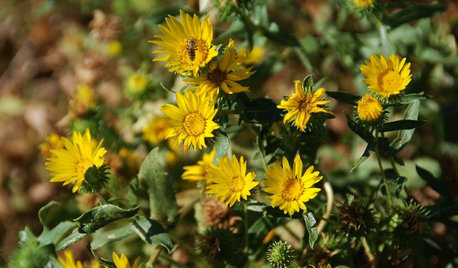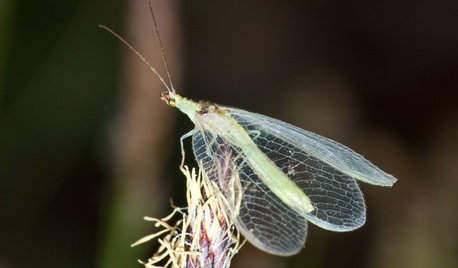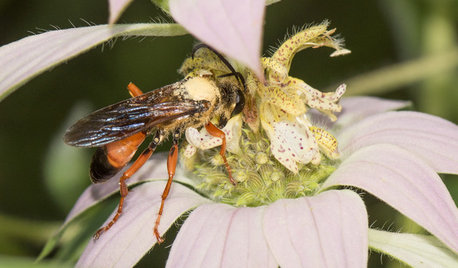Garden plants that are beneficial to soil
ffreidl
10 years ago
Related Stories

GARDENING GUIDESGreat Design Plant: Helianthus Maximiliani Attracts Beneficial Insects
Maximilian sunflower’s striking yellow flowers light up the fall landscape and attract pollinators and beneficial insects at a crucial time
Full Story
GARDENING GUIDESGreat Design Plant: California Grindelia Species for Beneficial Insects
Use gum plants as reliable summer bloomers and to provide habitat for California native bees, butterflies and other beneficial insects
Full Story0

GARDENING GUIDESInvite Cellophane Bees to Your Garden by Providing Patches of Bare Soil
Look for cellophane bees (Colletes) pollinating flowering trees and shrubs in U.S. gardens this spring
Full Story
GARDENING GUIDESLook Out for Lacewings: Beneficial Insects Coming to a Garden Near You
Lacewings are delicate insects that produce alligator-like, hungry offspring that devour aphids and other garden pests
Full Story
GARDENING GUIDESGreat Golden Digger Wasp: A Beneficial Flower-Visiting Insect
Introducing the great golden digger wasp, a colorful pollinator that also hunts foliage-eating insects
Full Story
FARM YOUR YARDHow to Get Good Soil for Your Edible Garden
The nutrients in your soil feed the plants that feed you. Here are tips on getting it right — just in time for planting season
Full Story
GARDENING GUIDESThe Poop Scoop: Enrich Your Soil With Good Old Manure
Get over the ick factor already — this natural super-ingredient for soil has so many benefits, you'll wonder why you ever went chemical
Full Story
GARDENING GUIDESHow to Stop Worrying and Start Loving Clay Soil
Clay has many more benefits than you might imagine
Full Story
NATIVE PLANTSPlant These Fall-Flowering Natives in Early Summer for Pollinator Love
These 3 groups of plants will support masses of beneficial insects come autumn
Full Story
GARDENING GUIDESGreat Design Plant: Try Blue Bells for Blooms in Dry Soil
This shrub’s violet-blue flowers and silvery foliage brighten low-water gardens all year long
Full StoryMore Discussions








wayne_5 zone 6a Central Indiana
glib
Related Professionals
Garden City Landscape Architects & Landscape Designers · Seabrook Landscape Architects & Landscape Designers · West Chester Landscape Architects & Landscape Designers · Norwood Landscape Contractors · Americus Landscape Contractors · Bethel Park Landscape Contractors · Gaithersburg Landscape Contractors · Hayden Landscape Contractors · Lyndhurst Landscape Contractors · Manhattan Landscape Contractors · Ridgewood Landscape Contractors · Roswell Landscape Contractors · Webster Groves Landscape Contractors · American Fork Decks, Patios & Outdoor Enclosures · Fredonia Decks, Patios & Outdoor Enclosuresklem1
nc_crn
Kimmsr
pnbrown
wayne_5 zone 6a Central Indiana
glib
Kimmsr
gardenlen
ffreidlOriginal Author
glib
ffreidlOriginal Author